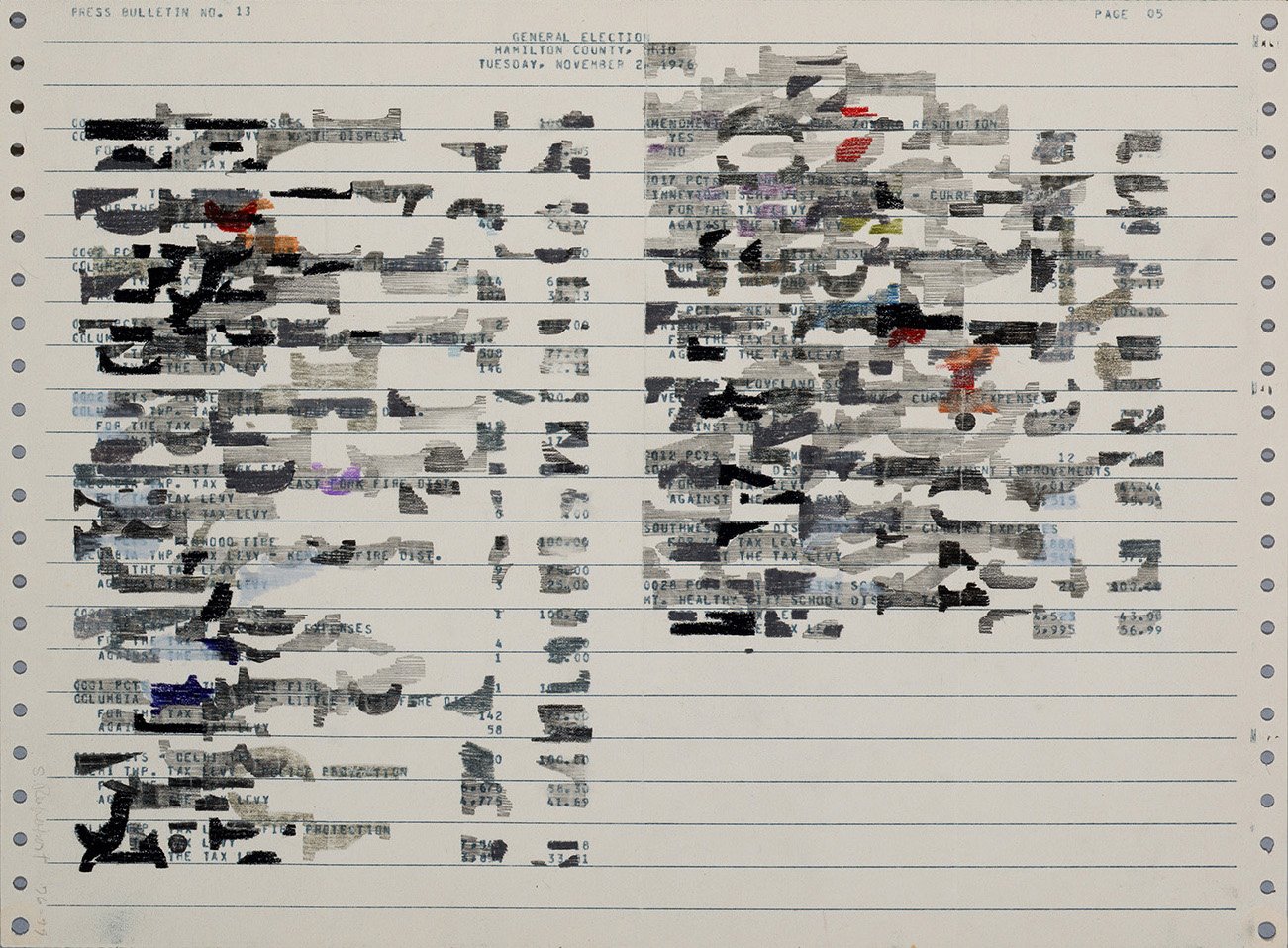My work is an aesthetic response triggered by scientific data. The forma is computer print-out, a ritualistic symbol of our technological society. My concerns deal basically with reflecting the society in which I live and clarifying the scientific approach to the understanding of this reality.
- Sonya Rapoport, Statement: “An Aesthetic Response, Union Gallery, San José, 1978.
Following the Yarn Drawings of 1976, Rapoport began using the pre-printed data in found computer printouts to structure her drawings. In works such as Genesis (1976) and Jimmy Carter (1977), she used colored pencil, layering partially-filled letter stencils over blocks of dot-matrix printed characters, giving the impression of an indecipherable code.
Jimmy Carter, 1977. Prismacolor, graphite, and pen on found continuous feed computer printout paper. 55W x 14.875H inches.
In 1977, Rapoport began the first of many collaborations with experts from other fields. Anthropologist Dorothy K. Washburn was using computers to analyze the mathematical symmetry patterns in the pottery of the ancient Anasazi people of the American Southwest. Not only did she provide printouts of her data for Sonya to draw on, but she assisted Rapoport in understanding the content of her research. This led to the Anasazi (1977) and Hovenweep (1977) series of drawings in colored pencil on computer printout paper.
Anasazi Series, Panel II, Page 2, 1977. Prismacolor, graphite, colored type, and dot-matrix print on computer printout paper, 14.875W x 165H inches.
The earliest of the Anasazi Series is an “aesthetic response to the data,” but as the series progressed, Rapoport started incorporating mathematical symbols and pottery design motifs from Washburn’s symmetry analyses, archeological site maps, translations of Navaho words, and documentation of art objects, deciphering the imagery behind the coded printed data.
At this time, Rapoport began taking a computer programming course, deepening her knowledge of what would become a critical tool.
Hovenweep V - VII, 1977. Prismacolor, graphite, colored type, and dot-matrix print on computer printout paper, 14.875W x 132H inches. Installed at Julie Casemore Gallery, San Francisco, 2022.







